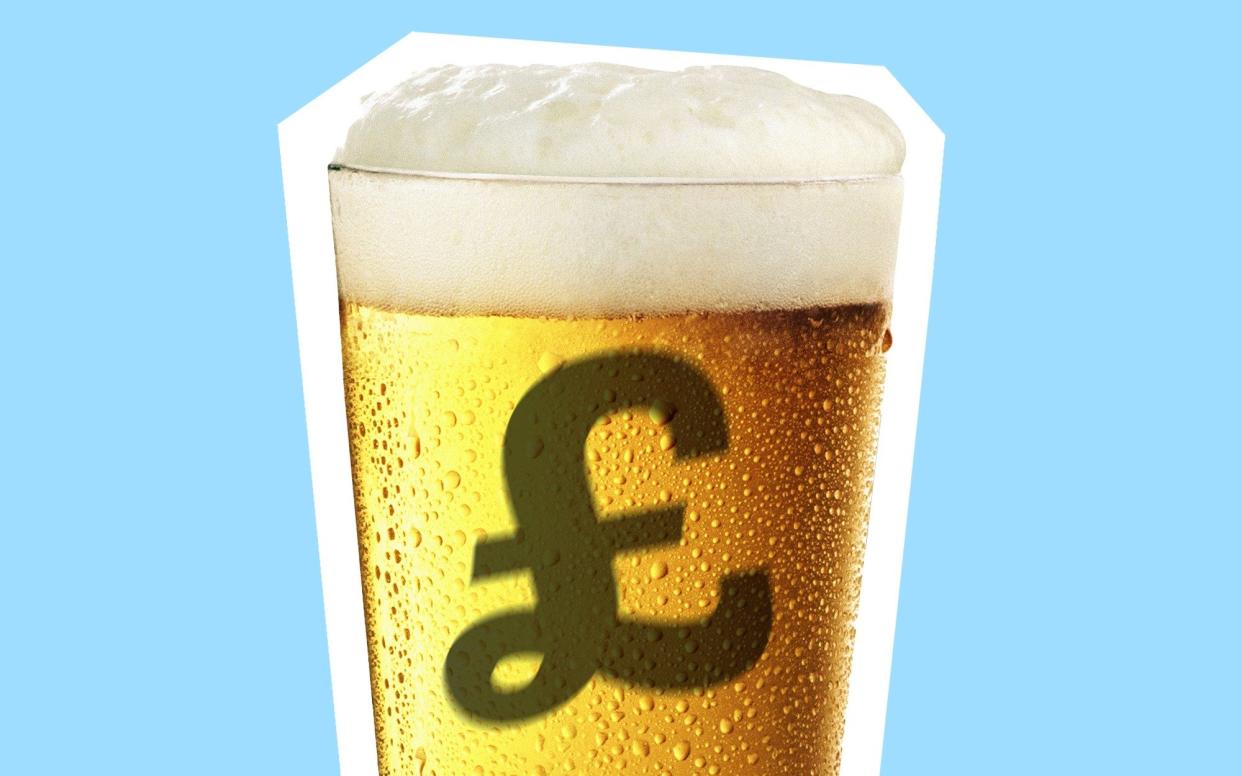Britain’s pint price map: find out if your local is close to serving a £10 beer

Going for a pint in 2024 can feel like you’re eating into your life savings. Some pubs – in central London at least – are charging up to £9 for a pint, and a round for four can easily hit £30. Further bad news comes after a terrible winter has hampered wheat harvests, leading to potential further price hikes.
It’s enough to make you want to sit on the sofa in despair with a four-pack of tinnies. The capital has borne the worst of the price rises – up 20 per cent since the beginning of last year, at many pubs, according to Evening Standard analysis – which have jumped dramatically over the past few years, due to the pandemic, the war in Ukraine, the rising costs of goods and labour, and especially inflation.
So, how soon will we breach the symbolic £10 pint threshold? (Remember when it was £5?). Speaking to Andrew Marr last year, Wetherspoon boss Tim Martin said “Andrew, there is no limit”, and that £8 would soon become normal. (The average London pint is £6.30, although that takes in wide discrepancies between the inner and outer boroughs). David McDowall, CEO of the country’s biggest pub group, Stonegate, said it would be a “wee while” before its pubs charge £10, but that could come within the next five years.
Find out how close your local is to charging the full tenner:
Across the country, the average price for a pint is now £4.80, according to the British Beer & Pub Association (BBPA). “Pubs value their loyal customers and have done their utmost to contain and absorb the pressures pushing up the price of a pint,” says BBPA chief executive Emma McClarkin. “But the cost-of-living crisis, spiralling energy costs and wider inflationary pressures over the last two years have inevitably led to rising prices.”
According to the BBPA, of an average pint (£4.80), £1.52 goes “straight to the Government in tax”, with pubs only making 12p in profit. The astronomical prices in London and some other large cities reflect the increasing costs of operating. Even within London, where the average price in some central postcodes is £6.63 according to CGA data, there are boroughs, such as Enfield and Hillingdon, where pints of Guinness – often sky high in the centre – can cost less than £3.50 while the average price of a pint in Enfield is only £4.76.
Dave Hayward is the co-owner of A Hoppy Place, a craft beer shop and tasting room with branches in Windsor and Maidenhead, and the Indie Rabble Brew Co, a brewery and taproom in Windsor. In the Maidenhead venue, a lager now costs £5.80, up from £4.50 three years ago. Hayward says he’s not sure people understand why a pint costs so much. Frozen Moon, Indie Rabble’s flagship lager, is sold to the taproom at £1.89 per pint. The £3.91 margin has to pay every bill that A Hoppy Place has. “It is a very hard industry to profit from at this time,” says Hayward.
After VAT, wages, rent, rates, utilities and other costs, the business is left with just 38 pence. That profit is kept back “because there’s always a need for a rainy day fund, and recently there have been many. I haven’t paid myself out of this pub since it opened. A £7 pint isn’t expensive, it’s simply breaking even for city pubs in 2024.”
The (relatively) good news is that with inflation coming down, price rises will become more steady, according to Phil Urban, CEO of Mitchells and Butlers, which manages over 1,700 pubs around the country. The “hike in prices that we have seen over the last two or three years with high inflation is slowing down, so in our latest round of menus we only took 1.8 per cent price [rises],” said Urban. “I think what we’ll see going forward is a return to more normal levels of price increases of between 2.5 and 5 per cent.”
For the BBPA, the £10 pint threshold is a long way off. “The average UK pint costs £4.80, so we do not envisage the average reaching £10 anytime soon,” said McClarkin. “No doubt you will be able to point to some examples of some pints in high-end pubs, bars or hotels where that price may be being charged, but it is certainly not typical.”
McClarkin says: “The next government needs to look at a fairer tax and regulatory framewor that will mean that the beer and pub sector can thrive and ensure the price of a pint can remain affordable in all parts of the UK.” One thing’s certain, however: prices won’t be going down.

 Yahoo News
Yahoo News 
